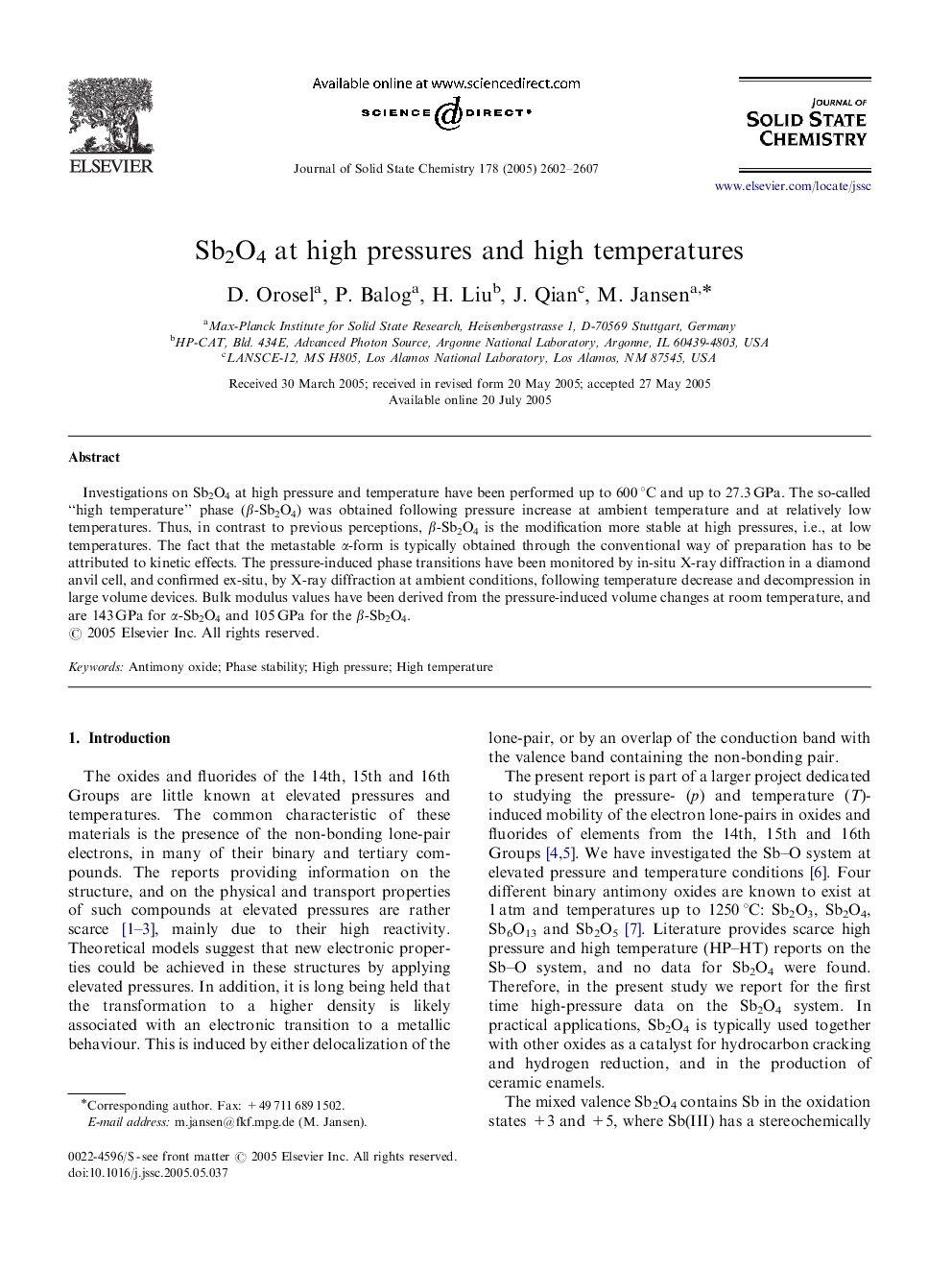| کد مقاله | کد نشریه | سال انتشار | مقاله انگلیسی | نسخه تمام متن |
|---|---|---|---|---|
| 1330190 | 978944 | 2005 | 6 صفحه PDF | دانلود رایگان |

Investigations on Sb2O4 at high pressure and temperature have been performed up to 600 °C and up to 27.3 GPa. The so-called “high temperature” phase (ββ-Sb2O4) was obtained following pressure increase at ambient temperature and at relatively low temperatures. Thus, in contrast to previous perceptions, ββ-Sb2O4 is the modification more stable at high pressures, i.e., at low temperatures. The fact that the metastable α-form is typically obtained through the conventional way of preparation has to be attributed to kinetic effects. The pressure-induced phase transitions have been monitored by in-situ X-ray diffraction in a diamond anvil cell, and confirmed ex-situ, by X-ray diffraction at ambient conditions, following temperature decrease and decompression in large volume devices. Bulk modulus values have been derived from the pressure-induced volume changes at room temperature, and are 143 GPa for α-Sb2O4 and 105 GPa for the ββ-Sb2O4.
In-situ synchrotron X-ray diffraction patterns taken during pressure increase and decrease at 23 °C in the DAC, indicating the first occurrence of ββ-Sb2O4 at 3.3 GPa, followed by the complete transformation of the αα-phase into the ββ-phase with pressure increase. The patterns taken during P-decrease indicate that there is no return to the starting α-phase.Figure optionsDownload as PowerPoint slide
Journal: Journal of Solid State Chemistry - Volume 178, Issue 9, September 2005, Pages 2602–2607